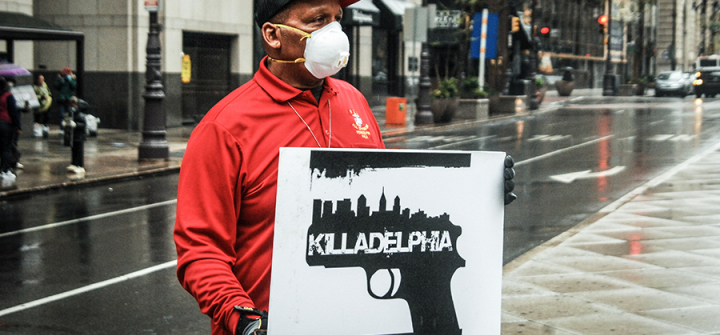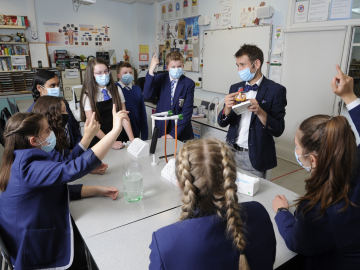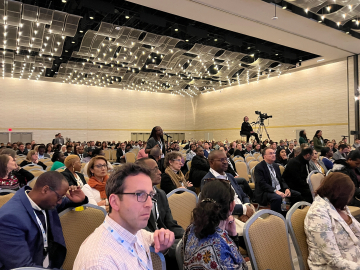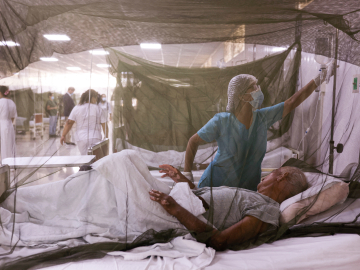What’s Behind COVID-19 Violence?
Calvin Munerlyn, a Family Dollar security guard in Flint, Michigan, was shot and killed May 5 after telling a customer to wear a face mask inside the store. A couple days later, a McDonald’s customer in Oklahoma City shot a worker when asked to leave a dining area closed due to COVID-19. People of Asian descent are being attacked in the US and Europe. Calls and texts to domestic abuse hotlines are spiking.
More than 90,000 Americans have been killed by SARS-CoV-2, but that number belies another statistic that’s even trickier to track: the people who have been injured or killed due to violence during the pandemic.
Violence, like fear and food shortages, seems to trail COVID-19.
In general, humans avoid violence when possible because it’s risky. However, neuroscientist R. Douglas Fields, PhD, has cataloged 9 specific triggers in the human brain that can tip us towards violence.
“And this pandemic hits all 9,” Fields says.
The human brain hasn’t changed much in the past 100,000 years, when those circuits made perfect sense, he says. “But we don't live in the same world,” says Fields, an adjunct faculty member at the University of Maryland, College Park who has written on neurological bases for violence, “and so these aggression circuits can get tripped inappropriately.”
“There's so many different forms of violence that are happening right now it's hard to understand them all,” says Dave Chester, PhD, a social psychologist at Virginia Commonwealth University. But a common thread, he says, is the pandemic’s impact on basic psychological needs like a sense of control and belonging, a meaningful existence, and self-esteem.
“When people thwart those needs,” he says, “we often get very aggressive.”
Chester explains that a lot of the aggression associated with COVID-19—from xenophobic attacks to domestic violence and shootings about wearing a mask—can be traced to people feeling like they’ve lost control over aspects of their lives.
“A central motivation behind aggression is to restore feelings of control and autonomy—a really good way to get someone to be aggressive in the laboratory is start making all their decisions for them. Boss them around, tell them what to do,” he says. “I think to some extent that's what's going on here. The violent reactions we're seeing are kind of a simple human tendency to react against being told what to do.”
Violence during a pandemic is nothing new—it’s a “persistent pattern” across history and pandemics, says Calvin Lai, PhD. Violence is often associated with prejudice against groups associated with the disease. “With bubonic plague, there were large-scale murders of Catalans in Sicily, pogroms against Jews, [and] the mass slaughter of beggars,” says says Lai, a social psychologist at Washington University in St. Louis who studies racism and xenophobia.
And while fears of contagion have fueled attacks against people of Asian descent in recent months, the myriad stresses of the pandemic, coupled with increased exposure as families stay at home, have led to an increase in domestic violence.
“You're at home with [an abusive partner], all the time in a confined space,” says Claire Renzetti, PhD, a sociologist at the University of Kentucky who studies intimate partner violence. “All these tensions are just ratcheted up.”
It’s difficult to quantify intimate partner violence, especially this early in the pandemic. But calls and texts to domestic abuse hotlines and other evidence point to a sharp increase. A review of 703 law enforcement agencies’ reports found that domestic violence calls went up 11% when much of the US shifted to sheltering in place, according to the safety research firm SafeHome. Renzetti believes that the actual increase may be even higher. An associate director of a shelter for battered women recently told Renzetti that they’re “starting to see more broken bones, more women really being afraid that they're going to die.”
There’s no simple public health solution to reducing violence during COVID-19 though the experts urge more public outreach and education.
Renzetti suggests borrowing tactics from violence prevention programs that promote healthy masculinity. Perhaps, she muses, public service announcements featuring celebrities associated with masculinity could “show them wearing a mask and talking about how, ‘I'm a man. And I'm going to stay healthy and this is good for my health and I'm looking out for other people.’”
Renzetti and Chester both recommend sharing resources to support hotlines and local shelters, especially in cases of intimate partner violence.
“We should be throwing our support and our full weight of our resources, [behind] supporting services that help victims of violence, that help people report when they feel unsafe in their homes,” says Chester. And, when it’s unclear if the police would be helpful or hurtful, he recommends calling a shelter.
In spite of all the personal turmoil, Chester maintains that it’s important to remember that these instances of violence during COVID-19 are outliers.
“The thing that I’ve noticed the most is how compassionate people are. Everywhere I go, there's far more examples of people helping each other, being kind to each other,” he says. “Just the fact that this many people voluntarily sequestered themselves in their house is one of the biggest demonstrations of human cooperation that I think we've ever seen.”
For the latest, most reliable COVID-19 insights from some of the world’s most respected global health experts, see Global Health NOW’s COVID-19 Expert Reality Check.
Join the tens of thousands of subscribers who rely on Global Health NOW summaries and exclusive articles for the latest public health news. Sign up for our free weekday enewsletter, and please share the link with friends and colleagues.
A member of Stop Killing Us protests the 13% increase in Philadelphia’s murder rate during the pandemic. April 21, 2020. Image: Cory Clark/NurPhoto via Getty Images




